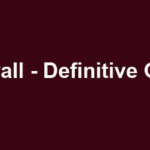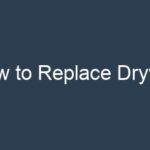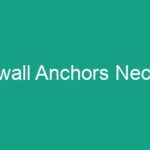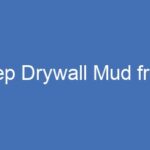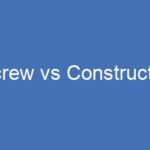What exactly is a level 5 drywall finish?
In the construction industry, there are six distinct levels of drywall finish, ranging from 0 to 5. But do you truly grasp the nuances of each of these drywall finish levels?
Level 5 stands as the most intricate and demanding drywall finish, requiring exceptional skill to execute. Level 5 encompasses all the steps of Level 4 but adds an extra thin skim coat of joint compound, creating a perfectly even surface.
To begin, it’s essential to clarify that the level of drywall finish refers to the quality of the wall surface intended for paint or other decorative coatings.
Level 0, for instance, is a bare drywall, while level 5 represents the most rigorous and demanding form of drywall finish.
If you are involved in any aspect of construction, understanding these drywall finish levels is crucial.
Let’s delve into each finish level, focusing specifically on level 5 drywall finish. We’ll explore what it entails, its applications, and the process of application.
Unveiling the 6 Levels of Drywall Finish
The construction, painting, and manufacturing trade associations have established a classification system consisting of six finish levels for drywall surfaces used in interior walls and ceilings.
Developed by the Gypsum Association in 1991, this ranking system standardizes the assembly and sealing of walls during construction.
These guidelines intricately define each level of finish, making it crucial to comprehend each level before we explore Level 5.
Level 0 Drywall Finish
Level 0 signifies that the drywall is affixed to walls and ceilings without any paper tape, mesh, or joint compound applied.
This level is primarily employed in areas where interior design has not been finalized, such as temporary construction wall barricades or dust partitions.
Level 1 Drywall Finish
Level 1 represents the most rudimentary finish. It involves applying drywall tape to seams and butt joints but no further coating with mud.
Typical applications for a Level 1 finish include concealed spaces like crawl spaces, attics, and service corridors, and it’s often used to meet fire ratings on partitions.
Level 2 Drywall Finish
Level 2 also denotes an unfinished state, generally not intended for painting and situated in non-public or non-living areas.
Here, joint tape is embedded in the compound, and tool marks and ridges are permissible. Level 2 is common in utilitarian spaces like garages and warehouses.
Level 3 Drywall Finish
Level 3 involves applying a layer of joint compound over the drywall tape. It necessitates additional coats for corner beads, ensuring a smooth, tool mark-free finish.
This level is suitable for medium to heavy wall finishes and may be used behind wall coverings, but manufacturer recommendations should always be consulted.
Level 4 Drywall Finish
Level 4 is the standard choice for walls and ceilings designed for light textures and paints like semi-gloss and flat paint.
It includes an additional coat of drywall mud over the tape, and the joint compound is sanded to achieve a flawlessly smooth surface. Level 4 is not suitable for high-gloss paints or wall coverings.
Now, you’re ready for Level 5, which promises ultra-smooth, flawless walls and ceilings.
Level 5 Drywall Finish: The Pinnacle of Perfection
Level 5 stands as the most intricate and demanding drywall finish, requiring exceptional skill to execute.
What distinguishes a Level 4 from a Level 5 finish? Level 5 encompasses all the steps of Level 4 but adds an extra thin skim coat of joint compound, creating a perfectly even surface.
Comparing Level 4 and Level 5 Drywall Finish
Levels 0 through 4 are seldom referenced on job sites; Level 5 is synonymous with top-quality, impeccably smooth wall finishes.
The labor-intensive nature of Level 5 application garners attention from all project stakeholders, as it denotes a pursuit of perfection.
While a Level 4 finish typically involves embedding, coating, and sanding, Level 5 goes a step further, incorporating a skim coat of joint compound for an impeccable result.
Level 5 involves three coats of joint compound, with the additional skim coat producing a remarkably smooth surface.
Applications of Level 5 Drywall Finish
Level 5 is the gold standard for a reason, but it’s not needed in all spaces. Concealed areas, like those behind kitchen cabinets or in storage areas, don’t require this level of perfection.
Level 5 is essential when the final coat is glossy or when critical lighting conditions expose imperfections.
Ceilings, especially when bathed in natural light, are prime candidates for a Level 5 finish, as it ensures an immaculate result.
How to Apply Level 5 Drywall Finish
If you’ve opted for a Level 5 finish, you face one last decision: how to apply it. There are three primary methods:
- Rolling on taping mud using a thick nap roller and then smoothing with a taping knife.
- Applying a skim coat by hand with a taping knife and pan.
- Spraying drywall compound mud with a sprayer.
Let’s delve into the details of each of these three options.
1. Rolling On Level 5 Finish
Even for small Level 5 projects, a paint roller is a suitable choice for achieving quality results.
Use a thick-nap roller and a correctly mixed drywall joint compound. After applying the taping mud, wipe away excess with a knife into the pan.
For larger projects, taping professionals often employ 24 or 48-inch skimming blades for efficient production.
2. Skim Coat by Hand With a Taping Knife
This traditional method involves using a taping pan and knife, though it’s less common today due to the availability of high-tech sprayers.
For small areas, hand application of a Level 5 skim coat may be suitable, but rolling or spraying is far more time-efficient for larger spaces.
Apply joint compound to the wall using a taping knife and smooth it over. Repeat as needed and lightly sand when finished.
3. Spray On Level 5 With High-Build Primer
The affordability of small, user-friendly sprayers makes this option increasingly attractive. Products like ‘Tuff-Hide’ by USG simplify the spraying process.
A single coat of Tuff-Hide with a sprayer, followed by gentle sanding, is the recommended approach for achieving a Level 5 finish.
Some high-build primer products offer moisture and mold resistance, further enhancing the appeal of a flawless Level 5 finish.
For professionals or DIY enthusiasts, having the right equipment is essential for achieving the smoothest Level 5 drywall finish.
Rolling On Level 5 Finish
Initial Sanding
Before applying a Level 5 finish, sand the wall surface with a pole sander, assuming you’ve already achieved a Level 4 standard finish. Ensure that all joints and interior angles are appropriately taped and coated with drywall mud.
Dust Removal
Remove all dust, drywall mud, and joint compound debris from the surface using a brush.
Mixing the Mud and Preparing the Compound
Mix the drywall joint compound with water until you achieve the desired consistency. Test the mixture by dipping a thick-nap roller; it should cling to the roller without dripping.
Prime the Surface for Easy Application.
You can also opt for pre-mixed drywall primer, also known as high-build primers, for convenient application.
Applying the Compound
Roll the compound across the entire surface, moving upward to prevent drips. Apply a single, heavy coat and ensure it doesn’t dry too quickly, as this could hinder removal.
Removing the Compound
After applying compound to a 4-foot-wide area, promptly remove any dried sections with a finishing knife. This process aims to achieve a uniform priming coat, not to apply a thick layer.
Final Sanding
Once the wall has dried completely, typically within an hour or two, sand it with a pole sander using 220-grit sandpaper until the surface is uniform.
Estimating the Cost of Level 5 Drywall Finish
You might wonder about the cost difference between a Level 4 and a Level 5 finish. Given its premium quality, a Level 5 finish as estimated to be from range of $2.00 to $4.00 per square foot, contingent on labor rates.
It’s important to note that this process is labor-intensive, with materials representing only a fraction of the overall cost.
Is a Level 5 Finish Worth the Investment?
You may be pondering whether a Level 5 drywall finish is worth the expense. A direct comparison between a Level 4 and a high-quality Level 5 skim coat finish reveals the value of the extra effort.
The contrast between a Level 4 finish and the flawlessly smooth surface of a Level 5 is evident. Armed with this knowledge, elevate your work to the next level!
Additional Resources:
Tuff-Hide Level 5 Solutions Brief – USG Sheetrock



